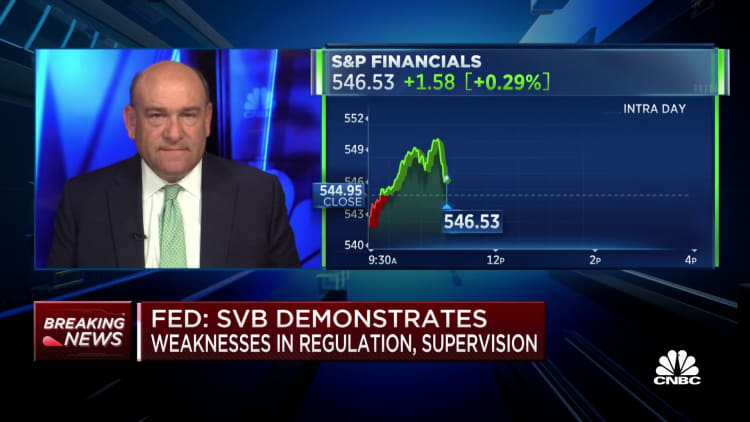People walk in front of a First Republic Bank branch on March 20, 2023, in New York City.
Gary Hershorn | Corbis News | Getty Images
Shares of First Republic dropped sharply Friday as hopes dimmed for a rescue deal that could keep the bank afloat.
Sources told CNBC’s David Faber that the most likely outcome for the troubled bank is for the Federal Deposit Insurance Corporation to take it into receivership. The stock slid 43% and was halted for volatility multiple times.
Shares of First Republic fell sharply on Friday.
Shares of First Republic were down more than 50% at one point during the session, hitting an intraday low of $2.98 per share. The stock has now fallen 97% this year, with most of the losses coming after investors lost confidence in the bank following the failure of two regional lenders in March.
The FDIC is asking other banks for potential bids on First Republic if the regulator were to seize the bank, sources told Faber. There is still hope for a solution that doesn’t include receivership, according to those sources.
First Republic told Faber on Friday that “we are engaged in discussions with multiple parties about our strategic options while continuing to serve our clients.”

CNBC reported Wednesday that First Republic’s advisors were preparing to pitch larger banks on a plan that would let the regional lender sell bonds and other assets at an above-market rate and then raise equity. The sales would result in a loss for the banks that buy the bonds but could be cheaper long-term than letting the bank fail and get seized by regulators.
Reuters reported Friday that U.S. officials — including from the FDIC, Treasury Department and Federal Reserve — are coordinating meetings with other banks to broker a rescue plan for First Republic.
Shares of First Republic closed at $16 on Monday before the bank reported its first-quarter results, which showed a decline in deposits of about 40%. The stock fell more than 60% over the next two days, hitting a new all-time low.
First Republic is a regional bank that has focused on high net worth individuals and their businesses, including offering mortgages at low interest rates to those customers.
Those mortgages, as well as other long-term assets on the bank’s balance sheet, have fallen in market value since the Fed began hiking rates last year, making investors worried that the bank would have to book a sizeable loss if forced to sell those assets to raise cash.
The bank’s massive deposit outflows came after the collapse of Silicon Valley Bank and Signature Bank in March. The nation’s largest banks, including JPMorgan Chase, have already helped out First Republic since then with $30 billion in time deposits.
Read the full article here




